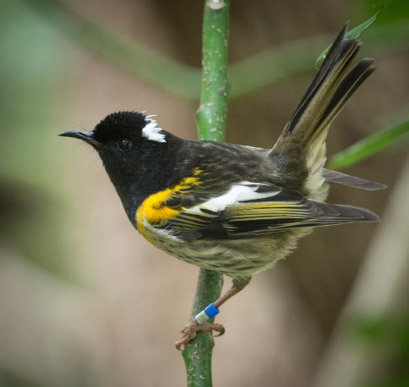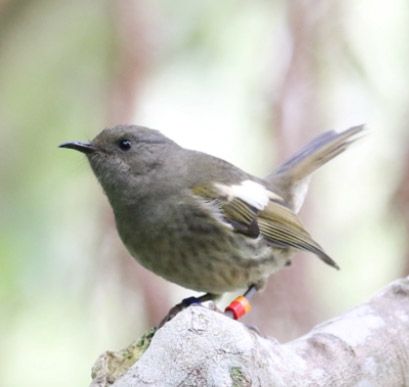Hihi are medium-sized forest dwelling passerines; with white wing bars, a slender down-curved bill and characteristic cocked tail. They are sexually dimorphic; males have a striking band of yellow on the shoulders, a jet black head and white ear tufts which they can erect as a sign of dominance, females are contrastingly more subtle with a mixing of olives and browns.


Hihi have a large repertoire of vocalizations. Perhaps the most distinctive is their strident call which has been noted to have a fanciful resemblance to the word “stitch†(imagine the sound of two pebbles clashing together) and hence their English name – stitchbird. In addition the males also make powerful high pitched single, double (“tee–ceeâ€) and triple note calls (“tee–cee–VEEâ€) and both sexes have a low warbling song which can last for several minutes.
Hihi feed on nectar, fruit and invertebrates, the proportions of which vary with availability and time of year. Although no longer considered honeyeaters (see below), they do share a largely overlapping niche with Aotearoa New Zealand’s two honeyeater species, the tūī and korimako (bellbird). Both these species are competitively dominant and frequently exclude hihi from fruit and nectar sources. Unlike the tūī or korimako , the hihi has become extinct from most of its former range (see below) and it’s likely that the only remaining natural population exists because of the pristine nature of the habitat there. Consequently, re-establishing a self-sustaining population in coexistence with tūī and korimako is considered an acid test for ecological restoration in Aotearoa New Zealand.